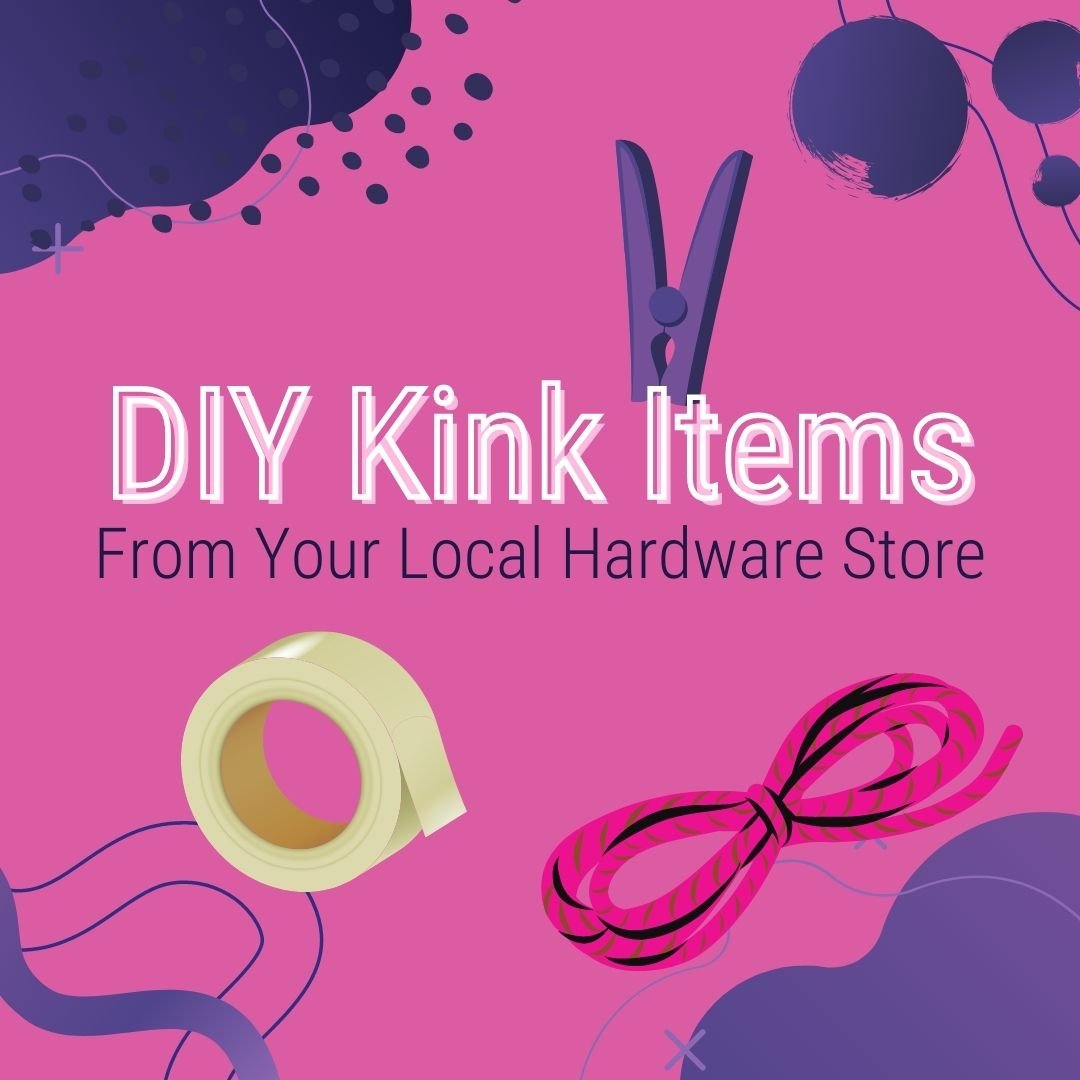If you’ve seen the film version of Fifty Shades of Grey, you’ll remember the main characters walking around a hardware store and suggestively picking out everyday items that could be used for BDSM. BDSM includes six main components: bondage and discipline, domination and submission, and sadism and masochism. The bondage component usually requires some outside tools to tie up or restrain one or more partners. In the film, Anastasia (played by Dakota Johnson) works at the store while Christian Grey (played by Jamie Dornan) asks for cable ties, masking tape, and rope, all while making searing eye contact. While this movie takes a considerably blunt heterosexual and slightly boring perspective on BDSM, queer women everywhere know that there’s nothing sexier than Dakota Johnson in a hardware store.
Visiting your local hardware store for kinky tools is actually really resourceful. There are a plethora of sex toy sites or sex shops that sell bondage and kink items, but it’s not always necessary to buy them from these places. Many of these items are essentially household objects, but with a flashy label and a huge price increase. Unless you’re supporting a queer- or BIPOC- owned small business like these, consider taking a do-it-yourself approach and pick up some staples from your local hardware or utility store.
For sensory deprivation, blindfolds and gags are frequently used. A blindfold can be easily recreated with any fabric tied around the eyes, and you could even add elastic if you have sewing skills. For gags, you can use similar fabric or masking tape to cover your partner’s mouth. If you are particularly interested in ball gags, this YouTube user shows you how to make one with just a wiffle golf ball and ribbon!
Another category is clamps, which can go on nipples, noses, and genitals to apply pressure, restrict blood flow, and reduce air intake. Paper clips, bobby pins, and clothespins all function in the same way while also being super cost-efficient! These tools are adjustable too, so you can make sure they are the perfect fit for their function.
Impact toys like floggers and whips are also popular, and are sold in many different materials. Leather straps, thin pieces of wood, and fringe string can all be purchased at hardware stores and if you are feeling extra crafty, you can customize your own! Do note it is always a good idea to make sure the materials you buy are body-safe, like sanding down your wood to avoid splinters.
Restraints are a super popular kink tool, and can range from simple hand binds to a full-body get-up. Rope is commonly used for this, and can be found at any hardware store. Cotton rope is the softest on skin, and experts recommend a thicker rope to avoid cutting off circulation. Other materials that will get the job done are polypropylene rope and nylon rope, each with slight differences in texture and weight. If you use rope for practices like Japanese Shibari, you might want to pick up a couple of different ropes and see what works best for you to tie and knot with. But if you’re tempted to use duct tape for restraining, think again. Most bondage pros use something called “bondage tape” made out of PVC plastic and only sticks to itself, protecting skin and hair. Regular duct tape can leave a harsh mark on your skin, pull out hair, and cause other irritation, so if you’re looking to use tape you might want to check out the sex stores for this one.
For more complicated bondage tools like spreaders, yokes, and chastity cages, you’d need some pretty developed DIY skills to make them yourself, but the materials you would need are easily accessible. Some use materials like polymorph plastic which can be heated and made malleable for form-fitting devices like chastity cages. Spreaders essentially require a long shape like a wooden dowel or a lightweight metal or plastic pipe, anything that won’t easily bend or snap. Again, our YouTube bondage expert has a video on making your own spreader that only requires three materials! The essentials of rope and tape will come in handy when using these handmade pieces.
While there are great cost-efficient alternatives to many of the common bondage and BDSM tools, you should pay special consideration to any objects intended to enter the body or have intense skin contact. For internal toys like dildos, plugs, vibrators and sensation play tools like wax and temperature toys, you want to be using body-safe materials that are intended for this purpose. Using everyday items might be less expensive, but it’s not worth the sacrifice of health or safety for you or your partner(s). For these more specific toys, check out these great sex-positive and body-positive companies like Unbound, Enby, and FeelMore. If you’re interested in learning more about the world of kink, check out SHA’s Kink-Informed Certificate program taught by the Supernova of Kink herself, Midori.
By Sydney Sullivan




